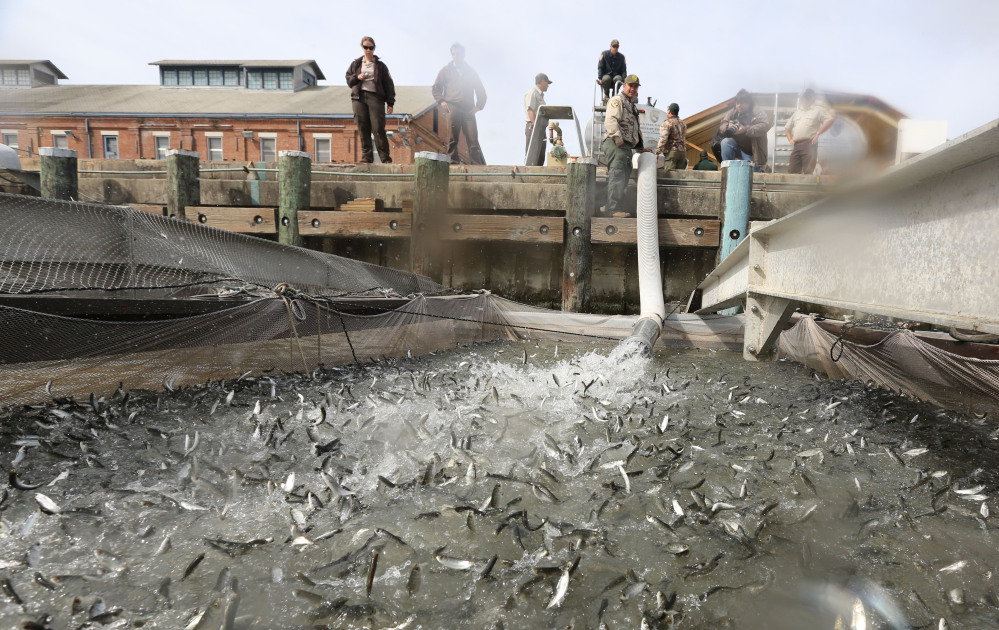MARE ISLAND, Calif. — In drought-stricken California, young Chinook salmon are hitting the road, not the river, to get to the Pacific Ocean.
Millions of six-month-old smolts are hitching rides in tanker trucks because California’s historic drought has depleted rivers and streams, making the annual migration to the ocean too dangerous for juvenile salmon.
“The drought conditions have caused lower flows in the rivers, warmer water temperatures, and the fish that would normally be swimming down the rivers would be very susceptible to predation and thermal stress,” said Kari Burr, fishery biologist with the Fishery Foundation of California.
California has been trucking hatchery-raised salmon for years to bypass river dams and giant pumps that funnel water to Southern California and Central Valley farms.
But this year state and federal wildlife agencies are trucking nearly 27 million smolts, about 50 percent more than normal, because of the drought, according to the California Department of Fish and Wildlife.
Each spring, the Coleman National Fish Hatchery usually releases about 12 million smolts into Battle Creek, a tributary of the Sacramento River near Redding.
But this year, it trucked 7.5 million of them to San Francisco Bay because the drought had made the 300-mile swim too perilous.
On a recent morning, a small convoy of tanker trucks carrying Coleman hatchery fish pulled up to the docks of Mare Island north of San Francisco.
There, the trucks unloaded 750,000 smolts that gushed out of long plastic pipes into floating netted pens.
The silvery smolts, just inches long, acclimated to the water in the net pens before Fishery Foundation boats took them out to the bay, where the fish were released and pulled to the ocean by tides.
Trucking the smolts ensures a large number will survive and grow to be the California king salmon prized by fishermen and seafood lovers.
But skipping the river journey means the migratory fish won’t know how to swim home to spawn in three years.
“Because that imprinting cycle is broken, it’s unlikely that many fish will make it back to Coleman. In other words, they stray. They won’t find that scent to where home is,” said Scott Hamelberg, who manages the Coleman National Fish Hatchery.
The federal hatchery in Shasta County did release 4.5 million smolts into Battle Creek in April after rain temporarily improved river flows.
Hamelberg hopes at least a small number of them will return in a few years and serve as broodstock for future generations.
Send questions/comments to the editors.



Success. Please wait for the page to reload. If the page does not reload within 5 seconds, please refresh the page.
Enter your email and password to access comments.
Hi, to comment on stories you must . This profile is in addition to your subscription and website login.
Already have a commenting profile? .
Invalid username/password.
Please check your email to confirm and complete your registration.
Only subscribers are eligible to post comments. Please subscribe or login first for digital access. Here’s why.
Use the form below to reset your password. When you've submitted your account email, we will send an email with a reset code.